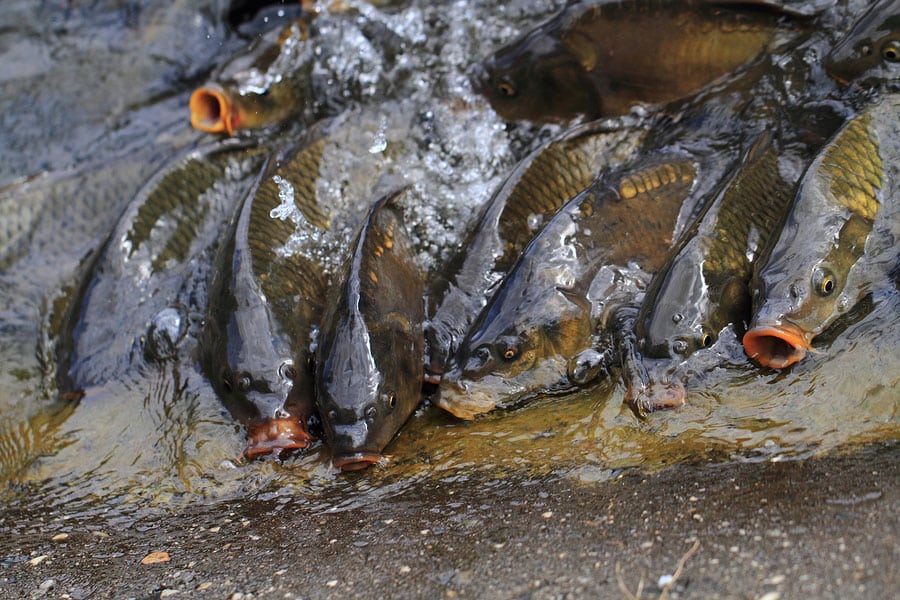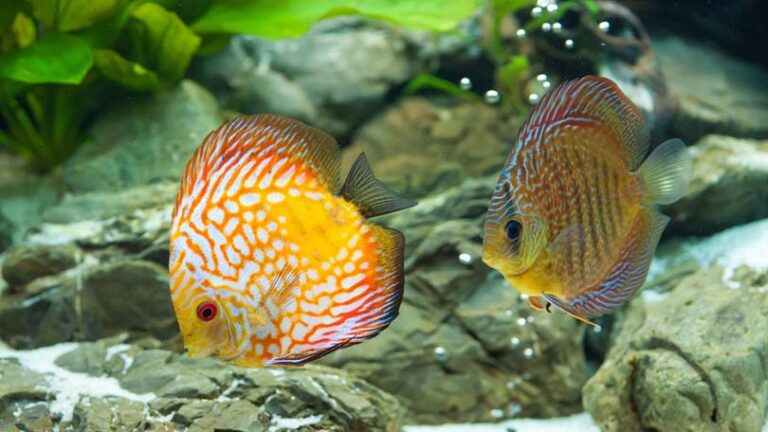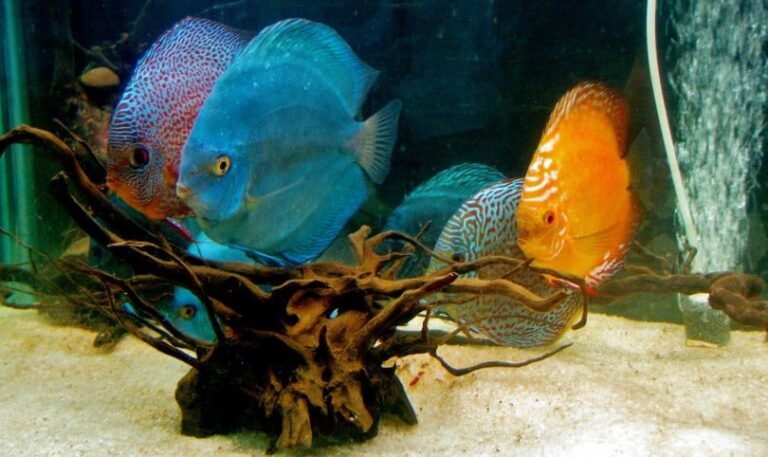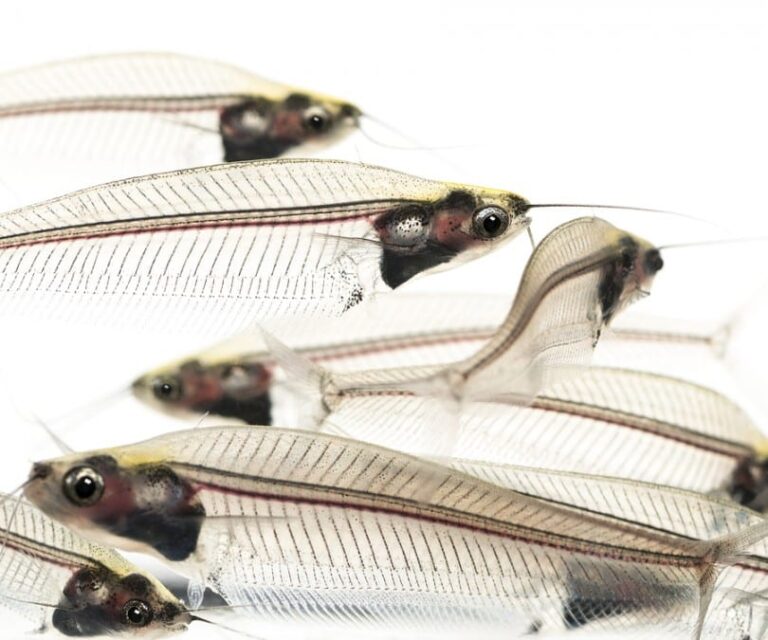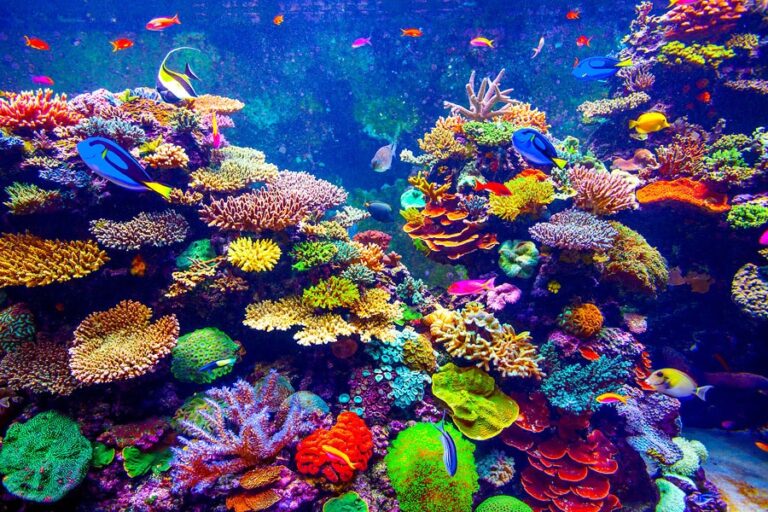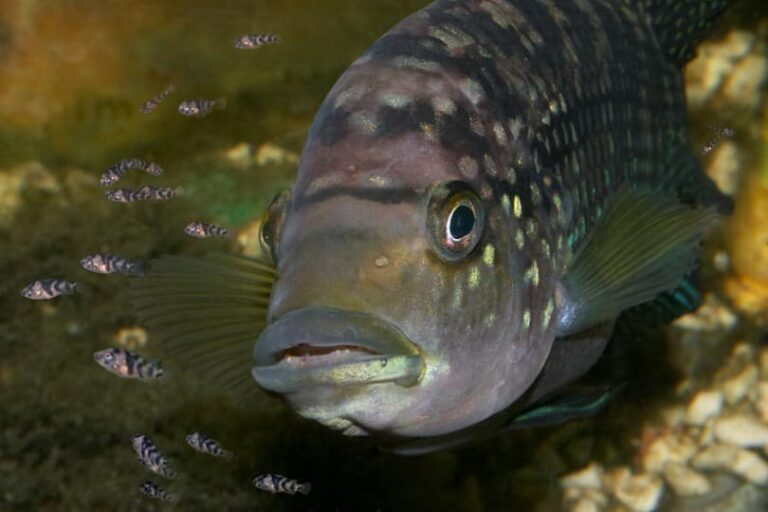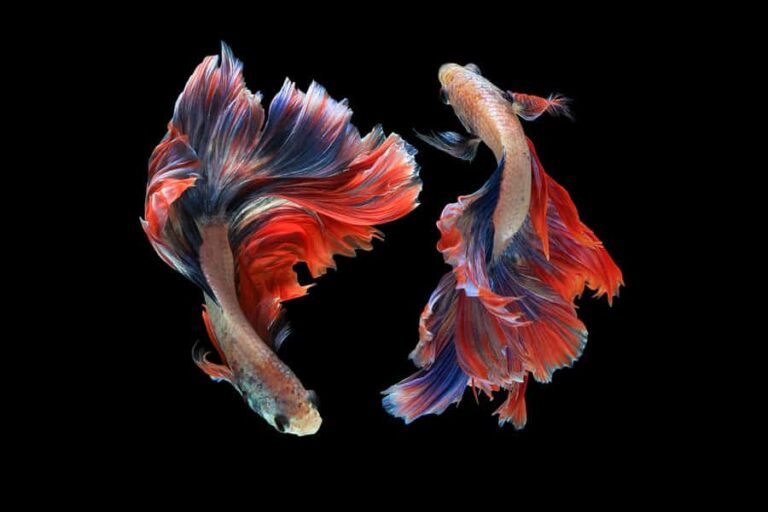Killifish
The Killifish are endemic to all over Asia, Africa, North America, and regions of Europe. These fish are found in all freshwater habitats. There are over 500 varieties of them in this family. Many of them are indigenous to brackish water and some do live in fresh salt water. Killifish are famous for their adaptiveness. Several varieties survive in water bodies that are getting dry in summer. Certain varieties live for some time beneath layers of ice, whereas the Desert Pupfish, whose scientific name is Cyprinodon, are occasionally seen in the water of temperature 116.6oF (47oC), which temperature is quite above the mortal body temperature for almost all types of vertebrates. Killifish are inhabitants of diverse surroundings; they are adaptable to any situation, among which the ‘phoenix-like’ cycle of rebirth and death stands out.
One can distinguish the male Killifish from its female counterpart without difficulty. The males generally display bright colors like red, green, blue, yellow and the like, but the females display drab colors.
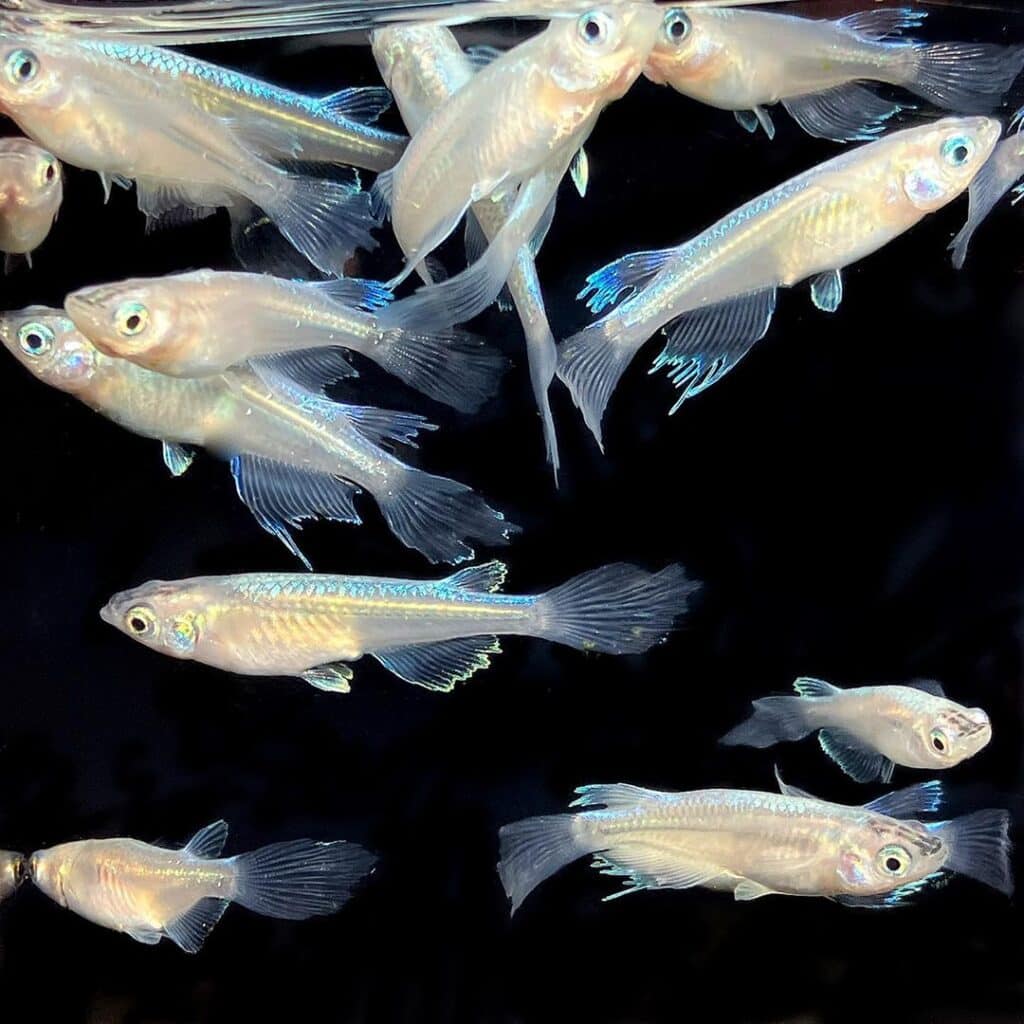
Annual, Non-Annual Killies
Annual Killifish
There is a noteworthy demarcation among the Killifish living in permanent water bodies and those living in unstable water bodies.
The Killies living in temporary water bodies are called “annual Killifish”. These annual Killifish lay their eggs in the substrate where they live, at times they dive and penetrate into the sediments or dirt settled below and vanishes till they are capable of laying some eggs. These eggs remain in the dirt or mud totally underdeveloped so long as the stream or pond is dry. When completely dry, development of the eggs begins and once the rain begins, certain eggs are prepared for hatching. Initially, only a few of them get hatched, after the water is resumed, because naturally the stream dries fast. Certain eggs are retained for hatching, until the second or third rainfall.
This typical type of fish survives in flood plains and passing away ponds, their life span is very short. These varieties are called “annuals”, their life span is 9 months at the most. Such Killifish are the African genus called Nothobranchius and the genus of South America hailing from the cold water, called Austrolebias of Argentina and Uruguay, extending to higher tropical regions like Pterolebias, Gnatholebias, Terranatos and Simpsonichthys.
There is also a category called Semi-annuals can endure both dry and wet conditions. Their eggs can be hatched normally, or hatched after drying.
Non-Annual Killies
Most of the Killifish inhabit everlasting rivers, streams and lakes and survive from 2 to 3 years. These Killifish are locals of America in places like Fundulus, Cyprinodan and Rivulus and also in Asia and Africa, in places like Aplocheilus, Aphyosemion, Fundulopanchax, Epiplatys and Lacustricola, also in the South of Europe in Aphanius. Certain habitats are quite extreme; the Devils Hole with a depth of minimum 300 ft. (91 m) is the only habitat in nature, of the Devils Hole Pupfish, whose scientific name if Cyprinodon Diabolis. This hole branches to tiny openings on the surface, to roughly 6 ft. X 18 ft.
Few of the colorful fresh water fish are non-annual Killifish that are as attractive as the salt water fish. Under normal situations, they lay a reasonable number of eggs daily. The developing and hatching period is about 2 to 3 weeks. Unlike the other fish, Killifish swim freely in search of food soon after they are hatched. The hatchlings are fed with all the nutrients before emerging out of the shell. The membrane of the egg shell is hard when compared to the other fish eggs.
Habitat
The Killifish live in environments that are brackish or fresh waters in America, extending to the southern part of Argentina and towards the north and south of Ontario. You can even find varieties in the Southern parts of Europe, in Africa to the south of Kwazulu-Natal, in the Middle East, South Africa and Asia. You also find them eastwards in Vietnam and also on many islands of the Indian Ocean. You cannot find the Killifish in Antarctica, Australia and North Europe.
Feeding In the wild
The diet of Killifish mainly consists of aquatic arthropods like insects, such as mosquito and larvae, worms and aquatic crustaceans. Rudolf Koubek states that locations in Gabon where the streams are deprived of Killifish on account of the pollution are widely infested with malaria.
Description
The Killifish is one of the different oviparous Cyprindontiform fish that lays eggs. These groups include families of Cyprinodontidae, Valenciidae, Nothobranchiidae, Fundulidae, Rivulidae and Profundulidae. In all there are around 1270 various types of Killifish. Of them the Rivulidae is the largest family, comprising of 320 types. Even then, Killifish are at times taken as an English equivalent of Cyprinodontidae. A majority of the eggs of those Killifish survives even in partially dehydrated places. The majority of species depend on the this kind of depresses (Wiki: It is considered to be a physiological state of dormancy with very specific initiating and inhibiting conditions)., because, Most of the Killifishes are tiny, measuring one or two inches (2.5 – 5 cm), the biggest type of Killifish measures less than 6” (15 cm)
Types of Killifish
Lyretail Killifish
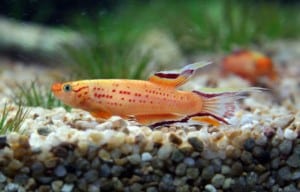
This is a graceful tiny fish, that opts for water that is mildly acidic and passive lighting. They belong to the Killifish type that survives for a longer time. They are of the introvert type, as such, they offer resistance for some time when you approach feed. to feed them.
Medaka Killifish
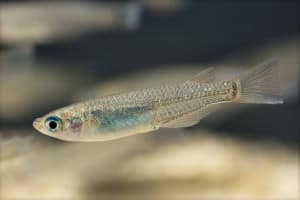
Medaka Killifish. Photo: Seotaro
These are Killifish of Japan, we find them in different shades of yellow, white, dark. green and gold glow. Navigating all over the earth, we find them as a premium vertebrate that breed fruitfully.
Bluefin Notho Killifish
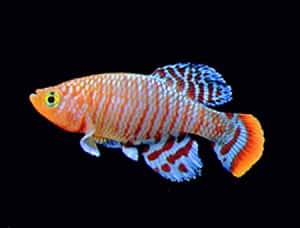
This is a tiny fish that lives for a short while; still they have enduring power, in particular they are creative breeders. We obtain them in many different colors.
Rainbow Killifish
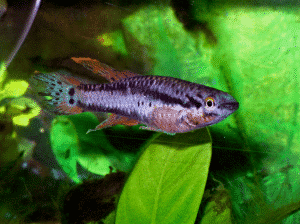
These represent the biggest variety of Killifish, with prominent brilliant red color. When compared to the others, they are ideal for breeding in the aquarium.
Ceylon Killifish
When compared to the other kin, they are bigger and tougher, are at times very violent, however, if provided with more space for hiding, they become calmer
Striped Killifish
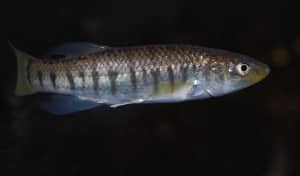
In comparison to the others, these Killifish survive for longer periods; they are peace-loving fish and favor colder water. They are agile and like to jump and play.
Growing at Home
Breeding Annual and Non Annual Killifish
Offer the annual Killifish a small sized breeding tank, place peat moss or sand as a substrate, for them to conceal their eggs. After this, eliminate the water and remove the parents from the tank. Maintain the substrate moist and warm for a period of 1 to 4 months,( this varies according to the species). Once this period is over, you can supply water and the eggs start to hatch. This simulates the process in which the Killifish lays their eggs in the wild in pools that are not permanent. The majority of this variety lives long enough for just a single breeding.
Breeding of the non-annual killifish can be done in the common breeding tank, arranged with plants having fine leaves or floating “spawning mops” which holds on to the eggs. Remove the parents as soon as the eggs are hatched, if not they will eat the eggs. It is possible to feed the pawn Killifish, with commercially available baby fish feed preparations or infusoria (Wiki: minute aquatic creatures)..After a period of 1 to 2 weeks, feed them with crushed flakes.
Tank
The standard size of the tank for a pair of Killifish is 24 inches (41 cm), having a capacity of 10 to 20 gallons (38 to 76 L). Even though the Killifish are indigenous to different habitats, most of them are community fish that live in a tank with less water and without water circulation. Place floating plants and plants that grow well, and provide shade. Add dark colored gravel and facilitate hiding places with rocks, roots and wooden pieces. Keep the cover as tight as possible, because some varieties, by nature, jump to catch flying insects. These Killifish generally prefer a community tank. They are in particular not violent, they are not killers.
Food
Another misleading notion is that Killifish need feed that is live, and as such, is difficult to breed. Certain fish are particular about live food and certain resist live food, they feed on flakes. Certain types spawn by eating just flake food. But most of them require frozen or live food for their success in spawning. Live feed mixed in their diet is good for all fish, this natural food that is available for most of the fish. All around the universe we do not find flake food in rivers or lakes!
Water
The standard of water relies on the type of habitat of the variety of the fish. The majority of the Aphyosemion varieties is placed in water with variable temperature, with hardness of water ranging from 3 to 10 dH, and pH ranging from 5.5 to 7.0. The Aplocheilus varieties have a preference of water possessing pH ranging from 6.0 to 7.5 and hardness of water ranging from 3 to 10 dH. The species of Killifish such as Epiplatys, Pachypanchax, Pterolebias, Rivulus, Nothobranchius, and Cynolebias need water, which is alkaline, having a pH ranging from 7.5 to 8.5 and hardness of water ranging from 10 to 20 dH. A number of Killifish species are kept in very warm water. Hence it is essential that you go through account of every Killifish in order to know the right temperature it needs.

Having discovered a fondness for insects while pursuing her degree in Biology, Randi Jones was quite bugged to know that people usually dismissed these little creatures as “creepy-crawlies”.

